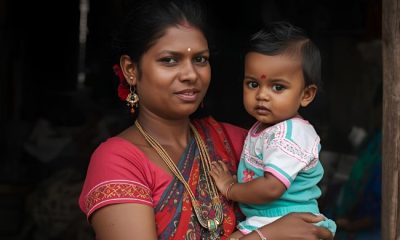Highlights
- BA.2.75 was first reported from India & then from about 10 other countries
- Too early to know if BA.2.75 can be more clinically severe: WHO
- In countries like India a new sub-lineage of BA.2.75 has been detected: WHO
United Nations/Geneva: A new sub-lineage BA.2.75 of the Omicron variant of the coronavirus has been detected in countries like India and the World Health Organisation is following this, Director-General Tedros Adhanom Ghebreyesus said. “On COVID-19, globally reported cases have increased nearly 30 per cent over the past two weeks. Four out of six of the WHO sub-regions saw cases increase in the last week,” Mr Ghebreyesus said at a press briefing Wednesday (July 5).
In Europe and America, BA.4 and BA.5 are driving waves. In countries like India a new sub-lineage of BA.2.75 has also been detected, which we’re following” he said.
On the emergence of the potential Omicron sub-variant BA.2.75, WHO Chief Scientist Soumya Swaminathan said in a video posted on Twitter that there has been an emergence of a sub-variant that is being called the BA.2.75 “first reported from India and then from about 10 other countries.” She said there are still limited sequences available of the sub-variant to analyse, “but this sub-variant seems to have a few mutations on the receptor-binding domain of the spike protein. So obviously, that’s a key part of the virus that attaches itself to the human receptor. So we have to watch that. It’s still too early to know if this sub-variant has properties of additional immune evasion or indeed of being more clinically severe. We don’t know that.” “So we have to wait and see,” she said, adding that WHO is tracking it and the WHO Technical Advisory Group on SARS-CoV-2 Virus Evolution (TAG-VE) is constantly looking at the data from around the world.
.@doctorsoumya explains what we know about the emergence of a potential Omicron sub-variant [referred as BA.2.75] ⬇️#COVID19 pic.twitter.com/Eoinq7hEux
— World Health Organization (WHO) (@WHO) July 5, 2022
And at any time if there is an emergence of a virus that looks very different from a previous one, enough to be called a separate variant of concern, then the committee will do that.
The WHO weekly epidemiological update on COVID-19, released July 6, said that globally, the number of new weekly cases increased for the fourth consecutive week after a declining trend since the last peak in March 2022.
During the week of June 27 to July 3, over 4.6 million cases were reported, a figure similar to that of the previous week. The number of new weekly deaths declined by 12% as compared to the previous week, with over 8100 fatalities reported.
As of July 3, 2022, over 546 million confirmed COVID19 cases and over 6.3 million deaths had been reported globally.
Also Read: COVID Cases On A Rise In 110 Countries, Driven By 2 Omicron Sub-Variants: WHO
The COVID update said that among Omicron lineages, the proportions of BA.5 and BA.4 continue to increase. BA.5 has been detected in 83 countries. Although BA.4, which has been detected in 73 countries, is also rising globally, the rate of increase is not as high as that of BA.5.
The South-East Asia Region has been reporting an increasing trend in cases since early June, with over 157,000 new cases reported, a 20% increase as compared to the previous week. Five of 10 countries (50 per cent) for which data are available showed increases in the number of new cases of 20% or greater, with the greatest proportional increases observed in Bhutan, Nepal and Bangladesh.
The highest numbers of new cases were reported from India (112,456 new cases, an increase of 21 per cent), Thailand (15,950, an increase of 6 per cent) and Bangladesh (13,516 new cases, a 53 per cent increase).
The number of new weekly deaths in the region increased by 16 per cent as compared to the previous week, with over 350 new deaths reported. The highest numbers of new deaths were reported from India (200 new deaths, a 39 per cent increase), Thailand (108 new deaths, a decline of 14 per cent), and Indonesia (32 new deaths, an increase of 7 per cent).
WHO Incident Manager COVID-19 Abdi Mahamud said that now is not the time to declare that the pandemic is over.
Also Read: COVID-19 Samples Collected From Parts Of Delhi Show Presence Of BA.5 Sub-Variant Of Omicron
“We’re still in the midst of the pandemic and the virus has a lot of force left. So whether it is the BA.4 or BA.5 or BA.2.75, the virus will continue. It does what it does good,” he said adding that people and communities must continue to wear masks, avoid crowds and ensure that the most vulnerable and high-risk population is protected.
Mr Ghebreyesus said compounding the COVID-19 challenge are a number of factors, including that testing has reduced dramatically in many countries.
This obscures the true picture of an evolving virus and the real burden of COVID-19 disease globally. It also means that treatments are not given early enough to prevent serious illness and/or death.
He said secondly, new treatments, especially promising new oral antivirals, are still not reaching low- and low-middle income countries, depriving whole populations that need them. Further, as the virus evolves, vaccine protection – while still really effective at preventing serious disease and death – does wane.
“Decreasing immunity underscores the importance of boosters, especially for the most at-risk,” the WHO chief said adding that each wave of the virus leaves more people with the long-COVID or post-COVID condition.”
This obviously impacts individuals and their families but it also puts an extra burden on health systems, the wider economy and society-at-large. These challenges require action at a global, national and local level, he said.
Also Read: WHO Asks South-East Asian Countries To Scale Up COVID-19 Vaccination
(This story has not been edited by NDTV staff and is published from a syndicated feed.)
NDTV – Dettol have been working towards a clean and healthy India since 2014 via the Banega Swachh India initiative, which is helmed by Campaign Ambassador Amitabh Bachchan. The campaign aims to highlight the inter-dependency of humans and the environment, and of humans on one another with the focus on One Health, One Planet, One Future – Leaving No One Behind. It stresses on the need to take care of, and consider, everyone’s health in India – especially vulnerable communities – the LGBTQ population, indigenous people, India’s different tribes, ethnic and linguistic minorities, people with disabilities, migrants, geographically remote populations, gender and sexual minorities. In wake of the current COVID-19 pandemic, the need for WASH (Water, Sanitation and Hygiene) is reaffirmed as handwashing is one of the ways to prevent Coronavirus infection and other diseases. The campaign will continue to raise awareness on the same along with focussing on the importance of nutrition and healthcare for women and children, fight malnutrition, mental wellbeing, self care, science and health, adolescent health & gender awareness. Along with the health of people, the campaign has realised the need to also take care of the health of the eco-system. Our environment is fragile due to human activity, which is not only over-exploiting available resources, but also generating immense pollution as a result of using and extracting those resources. The imbalance has also led to immense biodiversity loss that has caused one of the biggest threats to human survival – climate change. It has now been described as a “code red for humanity.” The campaign will continue to cover issues like air pollution, waste management, plastic ban, manual scavenging and sanitation workers and menstrual hygiene. Banega Swasth India will also be taking forward the dream of Swasth Bharat, the campaign feels that only a Swachh or clean India where toilets are used and open defecation free (ODF) status achieved as part of the Swachh Bharat Abhiyan launched by Prime Minister Narendra Modi in 2014, can eradicate diseases like diahorrea and the country can become a Swasth or healthy India.
[corona_data_new]

















